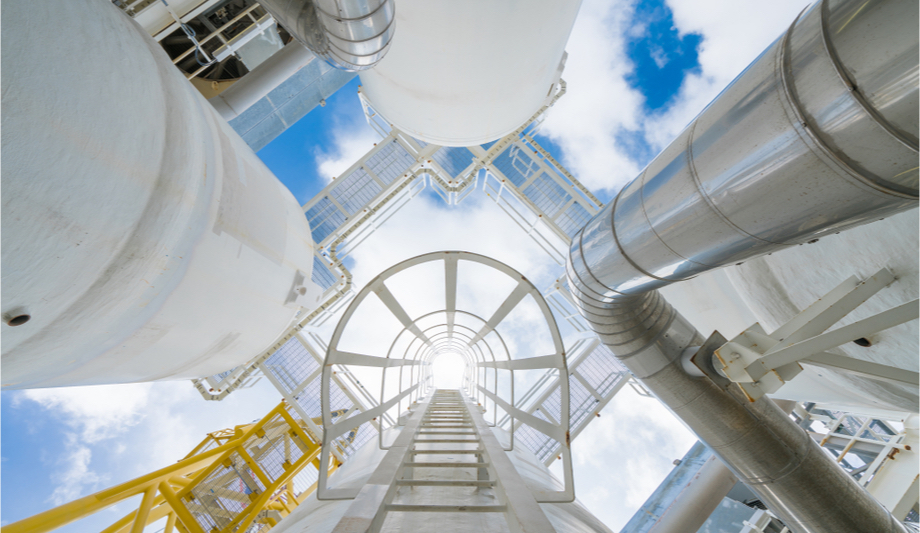What are the security challenges of the oil and gas market?
Editor Introduction
Protecting the oil and gas market is key to a thriving economy. The list of security challenges for oil and gas requires the best technology solutions our industry has to offer, from physical barriers to video systems to cybersecurity. We asked this week’s Expert Panel Roundtable: what are the security challenges of the oil and gas market?
The oil and gas market is markedly challenging in many ways, which means that customer and employee well-being is top-of-mind for security leaders and executives. As such, these leaders seek ways to lower operational risk, boost productivity, and ensure workplace safety – all through the technology they deploy. Additionally, asset protection and perimeter security are essential for these facilities, as expensive equipment must be secured. Combine this with extensive regulatory compliance requirements and oversight, and the oil and gas industry is one of the most demanding physical security environments that we serve. At the core of any comprehensive security plan within this industry is real-time video surveillance solutions combined with tools that can turn incoming video data into insights that drive not only the security initiatives, but also facility optimisation – whether the operation is upstream, downstream or midstream.
With any commodities-based industry, especially in the current world economy, the biggest threat facing business is inadequate or outdated risk management practices. With oil’s future hovering below $30 per barrel, the oil and gas industry must adopt standard risk matrices that assess cybersecurity as a safety measure, primarily as it relates to operational technology and information technology. In terms of operational technology and with infrastructure sabotage and geopolitical upset as a goal, the same bad-actors can deploy sophisticated “boutique” malware to target certain critical areas of production facilities or deploy more simple hacks to remote access to either disrupt or destroy. In terms of information technology, while cloud services introduce a measure of efficiency and collaboration, certain strains of malware have successfully attacked traffic, putting every internet-connected device on an enterprise network at risk. The server-side only protection is not adequate, necessitating a blend of client-side and server-side security measures.
The security challenges that the oil and gas market faces are extremely complex and regulated by strict legislative frameworks. In addition, because of the inherently dangerous nature of the sector, employees face safety hazards on a daily basis, as well as various other types of risk such as theft, vandalism and terrorism. These environments also typically experience remote, harsh and hazardous conditions, which can make deploying and maintaining security technology complicated. To combat these challenges, oil and gas facilities can turn to robust surveillance devices that are designed to withstand the elements while providing a complete view of the scene for monitoring activity and identifying threats. Robust IK10 housings, stainless steel or even explosive environment cameras that leverage 360-degree surveillance technology can provide unobstructed views of operations and represent a flexible and reliable solution for keeping facilities and crew members safe and secure.
Companies such as Chevron, ExxonMobile, Conoco, BP, Shell and others employ vehicle access barricades, bollards and crash gates to protect their petrochemical and hydrocarbon refineries, facilities, distribution centers and storage areas. The strategic security areas throughout their facilities, where lots of trucks come in and out each day, can create danger. Just one terrorist with one truck could put a facility out of business for months. Their goal needs to be that unauthorised vehicles can't get through. Period. When integrated properly into a total system, including fences, lights, alarms and other security components, vehicle barriers, bollards and gates are a key measure in preventing threats to sensitive locations.
The oil and gas industry has always faced significant security challenges, dealing with potentially dangerous assets, which have considerable value and infrastructure which is crucial to national economies and vital international transportation networks. From an installation point of view, security systems have differing requirements across different parts of the site – for example, in Zone 1 hazardous areas solutions must use explosion proof, ATEX approved kit. Arguably though, one of the most crucial elements for security is at the perimeter of petrochemical plants and refineries. Security systems need to have a clear view of any potential threats from outside the fence line, which often requires long range surveillance cameras that utilise thermal imaging for nighttime and poor visibility. Due to their importance (and often remote locations), oil and gas installations are a potential target for terrorists. There is a considerable challenge in protecting external infrastructure, such as pipelines and pumping stations.
The oil and gas industry is crucial to the world’s economy, impacting not only energy sources but also many of the products we take for granted. The demand for 90%+ uptime creates an inherent challenge as organisations look to consistently protect what matters most while maximising operations and increasing overall ROI. Factors that must be considered include workplace safety, compliance, and now, with COVID-19, the physical health and well-being of employees before they enter these facilities. A breakdown in security measures can cause operational havoc and disruption on a very wide scale. It is therefore crucial that security operations employ a proactive approach that leverages capabilities across various systems to help anticipate, identify, and mitigate threats. By unifying information, operators can gain new insights and situational intelligence that can simplify decision-making, accelerate action, and deliver better outcomes.
There are several security challenges beginning with the vast number of locations to protect. In the upstream natural gas industry, there are nearly 1,000,000 wells in the U.S. as of 2018. Upstream oil and gas sites are also based in remote areas where there is limited electrical power to run security cameras. Downstream facilities sit upon large solitary areas where large perimeters can span 20 kilometers. Designing a security system that can provide 24/7 monitoring for that amount of coverage is no easy task. False alarms continue to plague companies as it can take hours for someone to travel to the site to inspect an alarm. With so many security and operations devices connected to the network, cybersecurity concerns are at an all-time high. Customers also grapple with how to safeguard infrastructure integrity as well as minimise costly, unplanned or emergency turnarounds, shutdowns, equipment isolation and lockout/tagout events.
Editor Summary
The issues surrounding the oil and gas market are many and daunting, from regulatory compliance to the threat of terrorism, from workplace safety to (currently) COVID-19. Adding to the challenges are the sheer scope of the facilities to be protected and their possible location in remote and/or environmentally harsh locations. As our Expert Panel Roundtable points out, the industry is rising to the occasion and providing a range of solutions to ensure the safety and security of the market.















